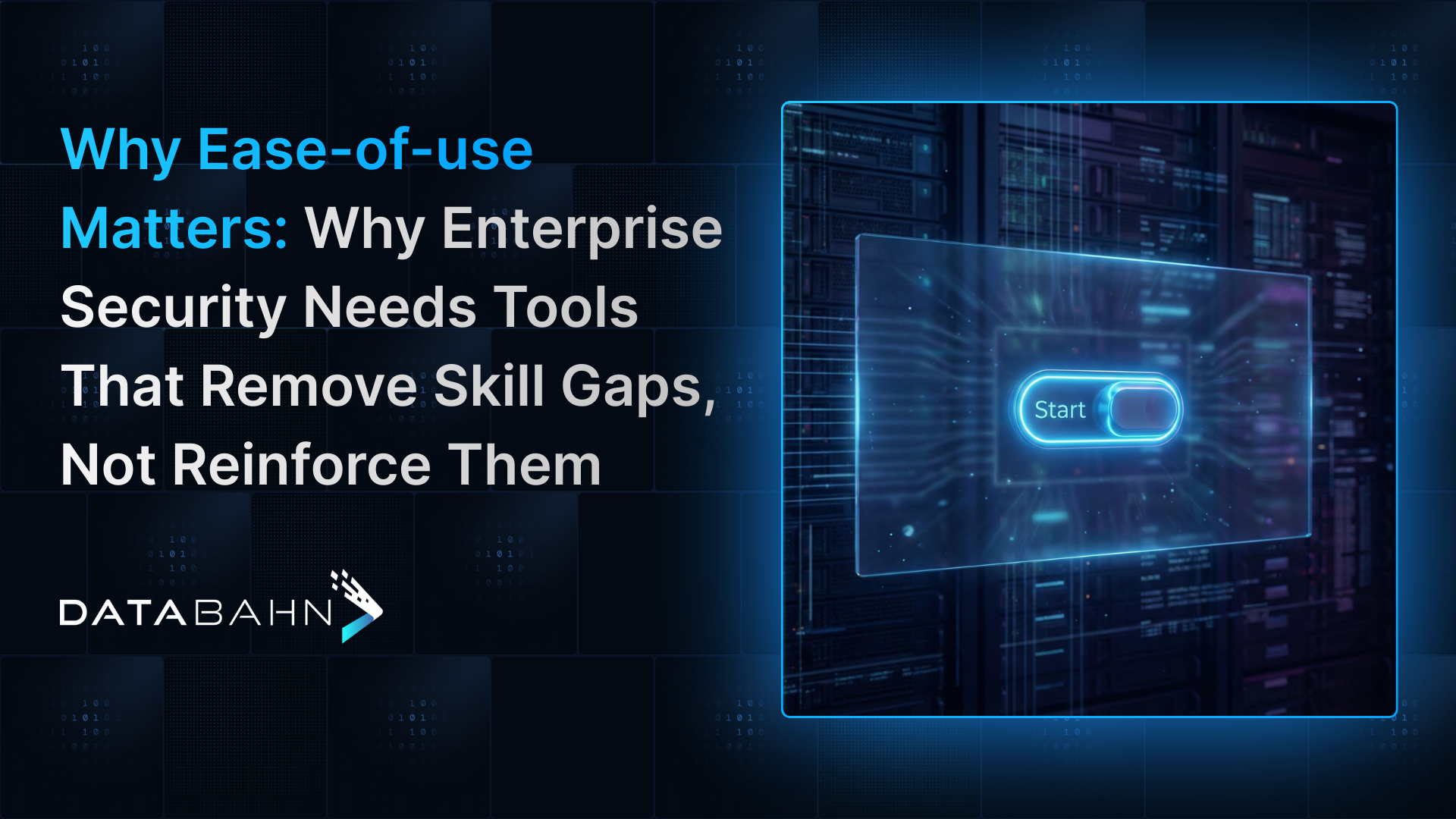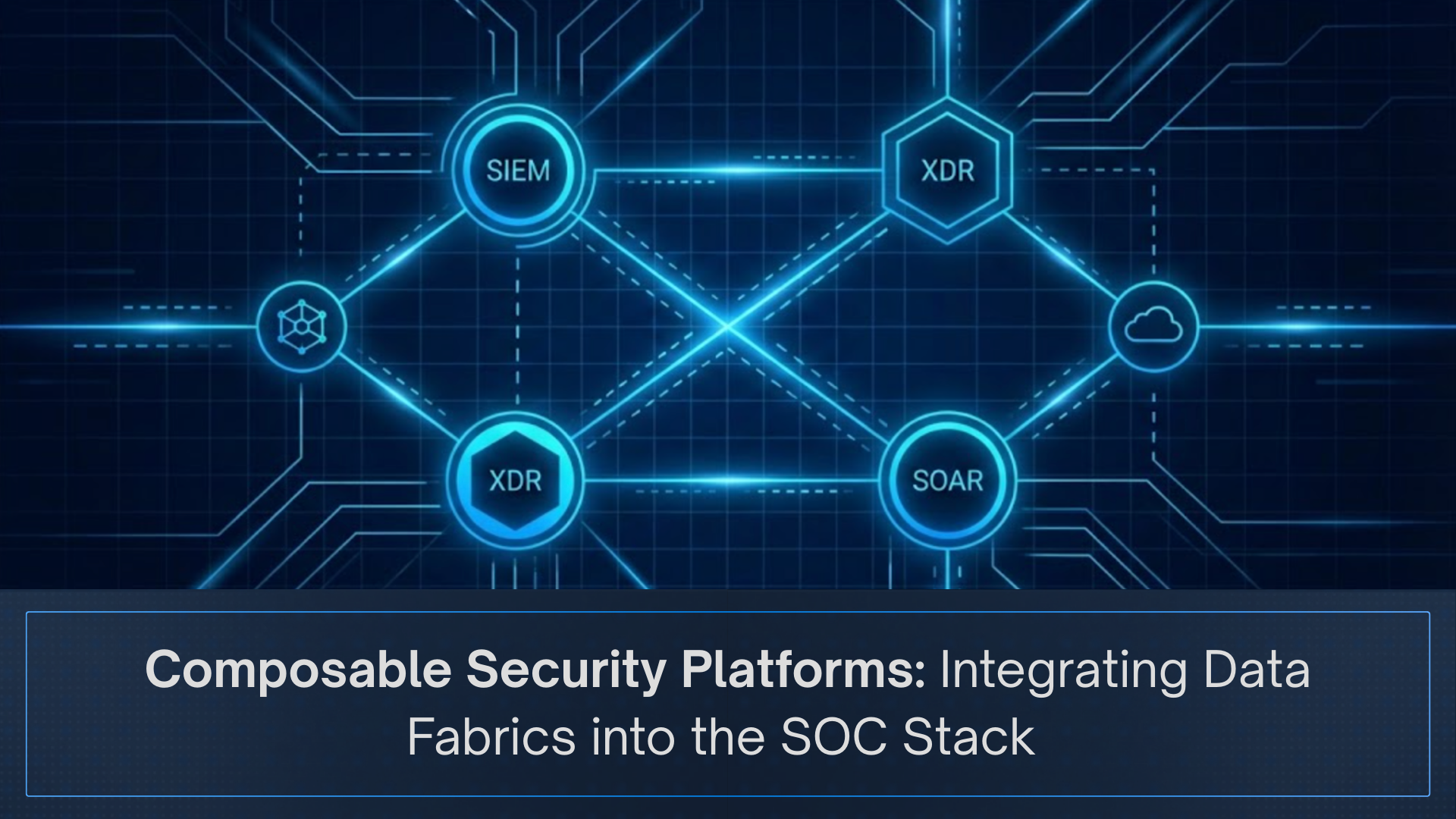In modern architectures, data protection needs to begin much earlier.
Enterprises now move continuous streams of logs, telemetry, cloud events, and application data across pipelines that span clouds, SaaS platforms, and on-prem systems. Sensitive information often travels through these pipelines in raw form, long before minimization or compliance rules are applied. Every collector, transformation, and routing decision becomes an exposure point that downstream controls cannot retroactively fix.
Recent breach data underscores this early exposure. IBM’s 2025 Cost of a Data Breach Report places the average breach at USD 4.44 million, with 53% involving customer PII. The damage to data protection becomes visible downstream, but the vulnerability often begins upstream, inside fast-moving and lightly governed dataflows.
As architectures expand and telemetry becomes more identity-rich, the “protect later” model breaks down. Logs alone contain enough identifiers to trigger privacy obligations, and once they fan out to SIEMs, data lakes, analytics stacks, and AI systems, inconsistencies multiply quickly.
This is why more teams are adopting privacy by design in the pipeline – enforcing governance at ingestion rather than at rest. Modern data pipeline management platforms, like Databahn, make this practical by applying policy-driven transformations directly within data flows.
If privacy isn’t enforced in motion, it’s already at risk.
Why Downstream Privacy Controls Fail in Modern Architectures
Modern data environments are deeply fractured. Enterprises combine public cloud, private cloud, on-prem systems, SaaS platforms, third-party vendors, identity providers, and IoT or OT devices. IBM’s analysis shows many breaches involve data that spans multiple environments, which makes consistent governance difficult in practice.
Downstream privacy breaks for three core reasons.
1. Data moves more than it rests.
Logs, traces, cloud events, user actions, and identity telemetry are continuously routed across systems. Data commonly traverses several hops before landing in a governed system. Each hop expands the exposure surface, and protections applied later cannot retroactively secure what already moved.
2. Telemetry carries sensitive identifiers.
A 2024 study of 25 real-world log datasets found identifiers such as IP addresses, user IDs, hostnames, and MAC addresses across every sample. Telemetry is not neutral metadata; it is privacy-relevant data that flows frequently and unpredictably.
3. Downstream systems see only fragments.
Even if masking or minimization is applied in a warehouse or SIEM, it does nothing for data already forwarded to observability tools, vendor exports, model training systems, sandbox environments, diagnostics pipelines, or engineering logs. Late-stage enforcement leaves everything earlier in the flow ungoverned.
These structural realities explain why many enterprises struggle to deliver consistent privacy guarantees. Downstream controls only touch what eventually lands in governed systems; everything before that remains exposed.
Why the Pipeline Is the Only Scalable Enforcement Point
Once organizations recognize that exposure occurs before data lands anywhere, the pipeline becomes the most reliable place to enforce data protection and privacy. It is the only layer that consistently touches every dataset and every transformation regardless of where that data eventually resides.
1. One ingestion, many consumers
Modern data pipelines often fan out: one collector feeds multiple systems – SIEM, data lake, analytics, monitoring tools, dashboards, AI engines, third-party systems. Applying privacy rules only at some endpoints guarantees exposure elsewhere. If control is applied upstream, every downstream consumer inherits the privacy posture.
2. Complex, multi-environment estates
With infrastructure spread across clouds, on-premises, edge and SaaS, a unified governance layer is impractical without a central enforcement choke point. The pipeline – which by design spans environments – is that choke point.
3. Telemetry and logs are high-risk by default
Security telemetry often includes sensitive identifiers: user IDs, IP addresses, resource IDs, file paths, hostname metadata, sometimes even session tokens. Once collected in raw form, that data is subject to leakage. Pipeline-level privacy lets organizations sanitize telemetry as it flows in, without compromising observability or utility.
4. Simplicity, consistency, auditability
When privacy is enforced uniformly in the pipeline, rules don’t vary by downstream system. Governance becomes simpler, compliance becomes more predictable, and audit trails reliably reflect data transformations and lineage.
This creates a foundation that downstream tools can inherit without additional complexity, and modern platforms such as Databahn make this model practical at scale by operationalizing these controls directly in data flows.
A Practical Framework for Privacy in Motion
Implementing privacy in motion starts with operational steps that can be applied consistently across every dataflow. A clear framework helps teams standardize how sensitive data is detected, minimized, and governed inside the pipeline.
1. Detect sensitive elements early
Identify PII, quasi-identifiers, and sensitive metadata at ingestion using schema-aware parsing or lightweight classifiers. Early detection sets the rules for everything that follows.
2. Minimize before storing or routing
Mask, redact, tokenize, or drop fields that downstream systems do not need. Inline minimization reduces exposure and prevents raw data from spreading across environments.
3. Apply routing based on sensitivity
Direct high-sensitivity data to the appropriate region, storage layer, or set of tools. Produce different versions of the same dataset, when necessary, such as a masked view for analytics or a full-fidelity view for security.
4. Preserve lineage and transformation context
Attach metadata that records what was changed, when it was changed, and why. Downstream systems inherit this context automatically, which strengthens auditability and ensures consistent compliance behavior.
This framework keeps privacy enforcement close to where data begins, not where it eventually ends.
Compliance Pressure and Why Pipeline Privacy Simplifies It
Regulatory expectations around data privacy have expanded rapidly, and modern telemetry streams now fall squarely within that scope. Regulations such as GDPR, CCPA, PCI, HIPAA, and emerging sector-specific rules increasingly treat operational data the same way they treat traditional customer records. The result is a much larger compliance footprint than many teams anticipate.
The financial impact reflects this shift. DLA Piper’s 2025 analysis recorded more than €1.2 billion in GDPR fines in a single year, an indication that regulators are paying close attention to how data moves, not just how it is stored.
Pipeline-level privacy simplifies compliance by:
- enforcing minimization at ingestion
- restricting cross-region movement automatically
- capturing lineage for every transformation
- producing consistent governed outputs across all tools
By shifting privacy controls to the pipeline layer, organizations avoid accidental exposures and reduce the operational burden of managing compliance tool by tool.
The Operational Upside - Cleaner Data, Lower Cost, Stronger Security
Embedding privacy controls directly in the pipeline does more than reduce risk. It produces measurable operational advantages that improve efficiency across security, data, and engineering teams.
1. Lower storage and SIEM costs
Upstream minimization reduce GB/day before data reaches SIEMs, data lakes, or long-term retention layers. When unnecessary fields are masked or dropped at ingestion, indexing and storage footprints shrink significantly.
2. Higher-quality detections with less noise
Consistent normalization and redaction give analytics and detection systems cleaner inputs. This reduces false positives, improves correlation across domains, and strengthens threat investigations without exposing raw identifiers.
3. Safer and faster incident response
Role-based routing and masked operational views allow analysts to investigate alerts without unnecessary access to sensitive information. This lowers insider risk and reduces regulatory scrutiny during investigations.
4. Easier compliance and audit readiness
Lineage and transformation metadata captured in the pipeline make it simple to demonstrate how data was governed. Teams spend less time preparing evidence for audits because privacy enforcement is built into the dataflow.
5. AI adoption with reduced privacy exposure
Pipelines that minimize and tag data at ingestion ensure AI models ingest clean, contextual, privacy-safe inputs. This reduces the risk of model training on sensitive or regulated attributes.
6. More predictable governance across environments
With pipeline-level enforcement, every downstream system inherits the same privacy posture. This removes the drift created by tool-by-tool configurations.
A pipeline that governs data in motion delivers both security gains and operational efficiency, which is why more teams are adopting this model as a foundational practice.
Build Privacy Where Data Begins
Most privacy failures do not originate in the systems that store or analyze data. They begin earlier, in the movement of raw logs, telemetry, and application events through pipelines that cross clouds, tools, and vendors. When sensitive information is collected without guardrails and allowed to spread, downstream controls can only contain the damage, not prevent it.
Embedding privacy directly into the pipeline changes this dynamic. Inline detection, minimization, sensitivity-aware routing, and consistent lineage turn the pipeline into the first and most reliable enforcement layer. Every downstream consumer inherits the same governed posture, which strengthens security, simplifies compliance, and reduces operational overhead.
Modern data ecosystems demand privacy that moves with the data, not privacy that waits for it to arrive. Treating the pipeline as a control surface provides that consistency. When organizations govern data at the point of entry, they reduce risk from the very start and build a safer foundation for analytics and AI.






.png)








.avif)

.avif)








